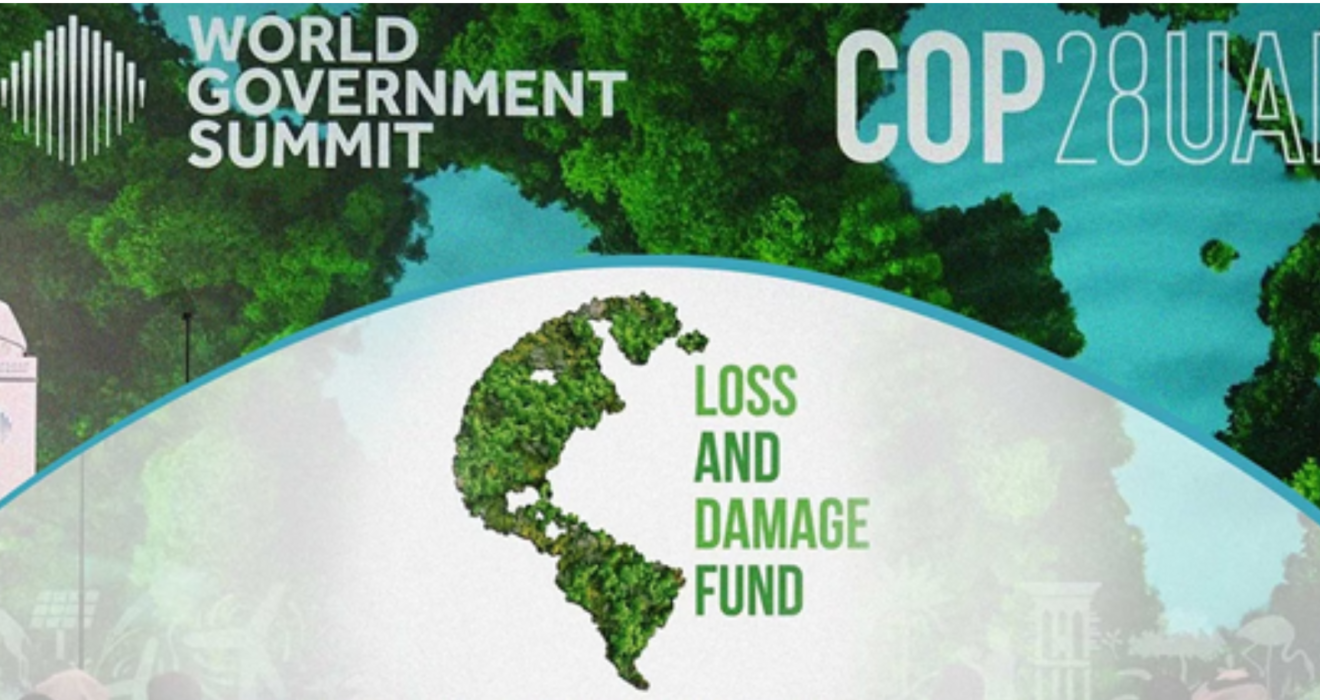For over three decades, there has been an ongoing demand for wealthier nations to recognize their responsibility for historical pollution, contributing to a global temperature rise exceeding 1.5 degree Celsius. The official consensus that was reached during the 19th Conference of the Parties (COP19) to the United Nations Framework Convention on Climate Change (UNFCCC) in Warsaw, Poland, in 2013, resulted in the formation of the Loss and Damage (L&D) fund.
This victory for developing nations echoed the sentiments of COP27, where after decades of advocacy, a consensus was finally reached to establish a fund for loss and damage associated with climate change. Led by Alliance of Small Island States (AOSIS) and developing countries, this monumental achievement paved the way for the transitional committee tasked with operationalizing the fund. Before a final decision was made at COP28, this transitional committee, which was made up of members from developed and developing nations, was tasked with discussing everything from who would pay into this fund to where it would be located.
What is Loss and Damage Fund?
The Loss and Damage Fund is a financial tool crafted to address the enduring repercussions of climate change beyond the reach of adaptation measures. It aims to provide compensation for tangible losses experienced by communities, nations, and ecosystems due to the adverse effects of climate change. These losses impact fundamental aspects such as human rights, welfare, and environmental sustainability.
Developing nations initially opposed the idea of the World Bank hosting the fund, citing concerns over its commitment to climate action. However, after intense negotiations, a compromise was reached, with the World Bank set to host the fund on a four-year interim basis.
The eyes of the world turned to Dubai for the 28th annual Conference of the Parties (COP28), the largest gathering of its kind. With over 1,00,000 attendees from governments, civil society, and the private sector, COP28 was set to tackle one of the most pressing issues of our time: climate change. The road to COP28 was marked by tireless advocacy and diplomacy, with the final agreement reflecting a delicate balance between the interests of developed and developing nations.
The United Arab Emirates COP Presidency (COP28) successfully launched the Loss and Damage (L&D) Fund after thirty years of development, securing over USD 700 million in pledges on November 30, 2023. The United Arab Emirates (UAE) declared its dedication of USD 100 million to the fund. Noteworthy contributions from other nations included the United Kingdom (UK), pledging GBP 40 million for the Fund and an additional GBP 20 million for alternative funding arrangements. Japan committed USD 10 million, the United States of America (USA) pledged USD 17.5 million, and the European Union (EU) (including Germany) committed 225 million euros.
While this is a positive step, it falls significantly short of the USD 400 billion annually required by developing countries to address loss and damage. The pledges represent less than 1% of expectations and only 0.2% of actual needs.
Comparisons highlight the disparity – the combined earnings of top football players like Cristiano Ronaldo, Lionel Messi, and Neymar Jr, and even Elon Musk’s losses in running Twitter for a year far exceed the pledged amount.

Redirecting subsidies from major oil companies, which reached USD 200 billion in profits in 2022, or G20 subsidies of USD 446 billion to fossil fuel producers, could cover the Fund’s requirements. Australia’s USD 85.6 million pledge to the Pacific Resilience Facility appears modest compared to the USD 37.5 billion in subsidies the country will provide to fossil fuel producers over the next four years. It emphasizes the need to redirect resources from contributing to climate change towards supporting climate action, as proposed by Mia Mottley, Prime Minister of Barbados, at COP28.

The call is to embed Loss and Damage alongside mitigation and adaptation as the three pillars of the Paris Agreement. The scale of loss and damage is immense, disproportionately affecting vulnerable communities, and it is time for affluent nations to take responsibility.
As the world grapples with the escalating impacts of climate change, COP28 stood as a pivotal moment in the fight against loss and damage. The establishment of the Loss and Damage (L&D) Fund signifies progress, yet it also highlights the immense challenges ahead. Redirecting resources, embedding loss and damage in global climate frameworks, and fostering international solidarity are critical steps towards building a more resilient and sustainable future for all.
Join us in taking action against climate change by exploring our Nature-based Climate Solution initiatives

Written by:
Pashmin Dee
Assistant Manager – Ecology & Biodiversity
References:
• https://timesofindia.indiatimes.com/blogs/kembai-speaks/takeaways-from-cop-28-deliberations/
• https://privatebank.jpmorgan.com/eur/en/insights/markets-and-investing/cop28-key-takeaways-and-opportunities
• https://earth.org/loss-and-damage-fund-contributions-at-cop28-so-far-cover-less-than-0-2-of-climate-related-losses-in-developing-countries/
• https://www.carbonbrief.org/qa-the-fight-over-the-loss-and-damage-fund-for-climate-change/
• https://www.lossanddamagecollaboration.org/pages/the-loss-and-damage-fund-and-pledges-at-cop28-shall-i-compare-thee-to-a-summers-day-or-to-the-annual-earnings-of-a-megastar-footballer




